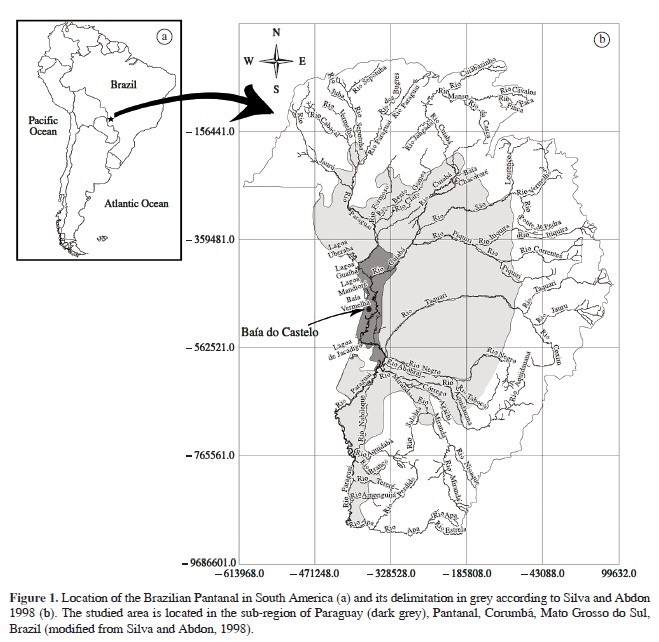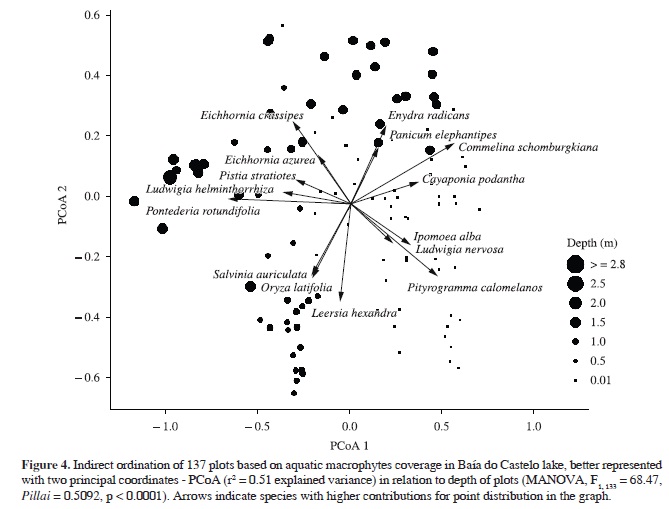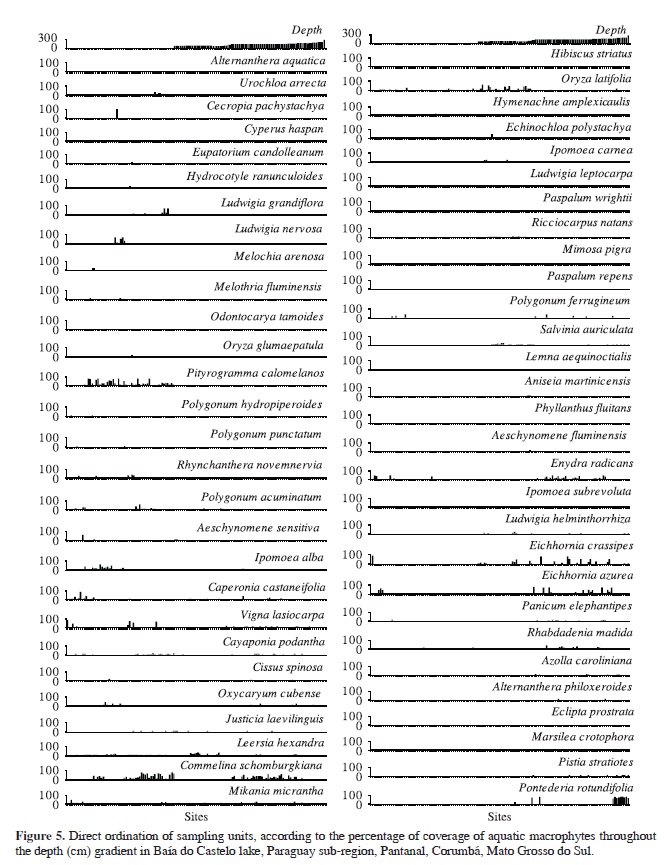Studies on Neotropical aquatic macrophytes have increased in recent decades, however species richness in wetlands of South America is far from being fully known. In addition, studies having an ecological approach are scarce in the Pantanal. Rapid assessments are essential for gaining knowledge of the biodiversity in the region. This study was performed in five sites of the Baía do Castelo, the western border of the Brazilian Pantanal, which included wild-rice patches, floating mats and floating meadows. At each site, plots of 0.5 × 0.5 m were set (n = 137), species of aquatic macrophytes were identified, their coverage was measured and the plot depth was estimated. We recorded 57 species in 26 families, of which Poaceae was the richest. The most frequent and abundant species was Commelina schomburgkiana; the second most frequent was Oryza latifolia,followed by Leersia hexandra, Enydra radicans and Pityrogramma calomelanos. The latter species was second in cover, followed by Pontederia rotundifolia, Eichhornia azurea, E. crassipes and Enydra radicans. These five species and C. schomburgkiana (the most abundant) together represent more than half of the coverage on the lake. Pontederia rotundifolia, Ludwigia helminthorrhiza, Pistia stratiotes, E. azurea, E. crassipes, Enydra radicans and Panicum elephantipes were strongly associated with deeper areas, while Oryza latifolia, Leersia hexandra and Salvinia auriculata were prevalent in shallow areas. Pityrogramma calomelanos, Ludwigia nervosa, Ipomoea alba, Cayaponia podantha, Polygonum acuminatum, Rhynchanthera novemnervia and Ludwigia leptocarpa were highly correlated with floating meadows. The structure of the habitat, natural dynamics and zonation of aquatic vegetation in the Baía do Castelo seems to be influenced by a variation in water levels, which promotes spatial segregation, most likely due to competition and/habitat preference.
aquatic macrophyte; Upper Paraguay basin; phytosociology; Pontederiaceae; wetland











